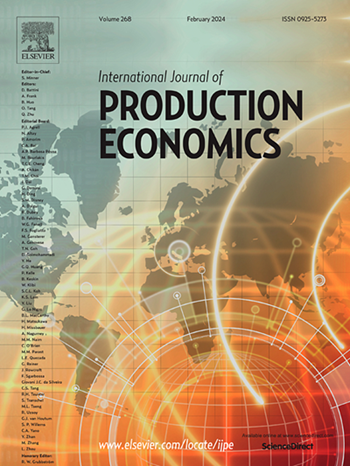Critical success factors for remanufacturing and reuse of equipment in the engineer-to-order shipbuilding industry
IF 10
1区 工程技术
Q1 ENGINEERING, INDUSTRIAL
引用次数: 0
Abstract
Ship equipment is of extremely high value, making them prime products for remanufacturing and reuse. However, despite increasing efforts to regulate the impact of shipping on the environment by promoting circularity, the strategies extending the product life of marine equipment, especially in European shipbuilding, are limited. This paper aims to identify critical success factors that enable better decisions making for remanufacturing and reuse of equipment in the engineer-to-order (ETO) shipbuilding industry. It contributes with an empirical study addressing circularity in the maritime industry for ETO products, which are typically designed for a specific customer. The research is based on an inductive study incorporating multiple workshops within the Norwegian ship building industry and includes actors such as original equipment manufacturers (OEM), shipyards, ship operators, and a classification society. The type of equipment in focus includes thrusters, cranes, generator sets, and hydraulic power units. Critical success factors specific to shipbuilding remanufacturing and reuse are identified, which are compared and contrasted with existing generic factors from the literature. We also examine the potential tensions and areas of agreement between the actors in the supply chain in relation to the identified factors. Our results confirm the potential for interfirm tensions, indicating that tensions in terms of perceived levels of importance exist in relation to damage, transport, product types, product value, and material composition. The study proposes self-reflective managerial questions, as well as new research lines to undertake a whole systems evaluation of the opportunities for adopting remanufacturing and reuse in the shipbuilding supply chain.
在工程订单造船工业中,设备再制造和再利用的关键成功因素
船舶设备具有极高的价值,是再制造和再利用的首选产品。然而,尽管越来越努力通过促进循环来管制航运对环境的影响,但延长海洋设备产品寿命的战略,特别是在欧洲造船业,是有限的。本文旨在确定关键的成功因素,使更好的决策再制造和再使用的设备在工程师到订单(ETO)造船业。它通过实证研究解决了ETO产品在航运业中的循环问题,这些产品通常是为特定客户设计的。该研究基于对挪威造船行业多个车间的归纳研究,包括原始设备制造商(OEM)、造船厂、船舶运营商和船级社等参与者。重点设备类型包括推进器、起重机、发电机组和液压动力装置。确定了船舶再制造与再利用的关键成功因素,并将其与文献中现有的通用因素进行了比较和对比。我们还研究了供应链中与已确定因素相关的参与者之间的潜在紧张关系和协议领域。我们的研究结果证实了公司间紧张关系的可能性,表明在感知重要性方面存在的紧张关系与损害、运输、产品类型、产品价值和材料成分有关。该研究提出了自我反思的管理问题,以及对在造船供应链中采用再制造和再利用的机会进行整个系统评估的新研究线。
本文章由计算机程序翻译,如有差异,请以英文原文为准。
求助全文
约1分钟内获得全文
求助全文
来源期刊
CiteScore
21.40
自引率
7.50%
发文量
266
审稿时长
52 days
期刊介绍:
The International Journal of Production Economics focuses on the interface between engineering and management. It covers all aspects of manufacturing and process industries, as well as production in general. The journal is interdisciplinary, considering activities throughout the product life cycle and material flow cycle. It aims to disseminate knowledge for improving industrial practice and strengthening the theoretical base for decision making. The journal serves as a forum for exchanging ideas and presenting new developments in theory and application, combining academic standards with practical value for industrial applications.

 求助内容:
求助内容: 应助结果提醒方式:
应助结果提醒方式:


